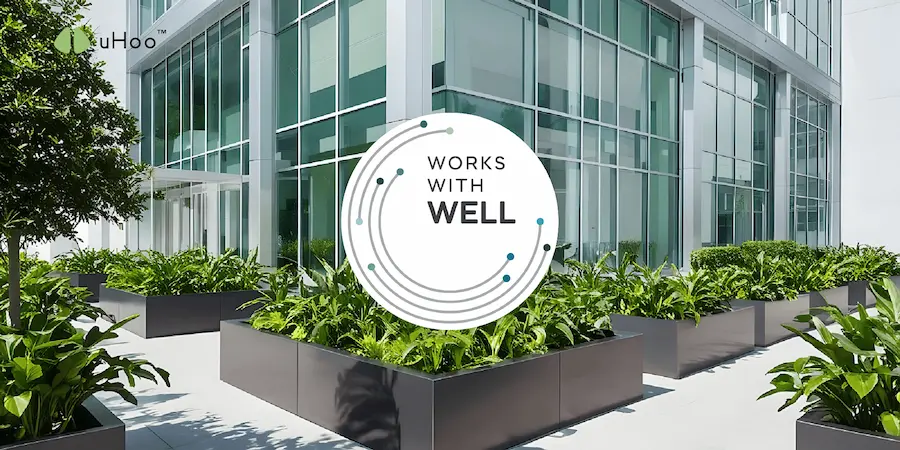The “Works with WELL” trademark, offered by the International WELL Building Institute (IWBI), is a powerful endorsement for products and services that contribute to healthier built environments. It signals alignment with the rigorous WELL Building Standard, a global benchmark for prioritizing human health and well-being. However, earning this designation requires meeting stringent criteria. This guide provides a detailed, step-by-step breakdown of the “Works with WELL” program’s standards, helping businesses understand the path to achieving this valuable recognition.
Phase 1: Preparation and Alignment
Step 1: Immerse Yourself in the WELL Building Standard: Before pursuing the “Works with WELL” designation, a comprehensive understanding of the WELL Building Standard is crucial. This involves delving into the ten WELL Concepts: Air, Water, Nourishment, Light, Movement, Thermal Comfort, Materials, Mind, Community, and Equity. Each Concept comprises various Features, with specific prerequisites (mandatory requirements) and optimizations (recommended enhancements). Familiarize yourself with the detailed requirements for each Feature, paying close attention to the metrics, testing protocols, and documentation needed to demonstrate compliance. The official WELL Standard document, available on the IWBI website (wellcertified.com), is your primary resource.
Step 2: Identify Relevant WELL Concepts and Features for Your Product: Analyze your product or service and clearly identify the specific WELL Concepts and Features it directly supports. Be precise and avoid overstating your product’s contributions. Focus on the areas where your offering demonstrably impacts human health and well-being within the built environment. For example, an air purification system might primarily align with the Air Concept, while a biophilic design element could contribute to the Mind Concept.
Step 3: Conduct a Thorough Gap Analysis: Evaluate your product’s current performance against the specific requirements of the chosen WELL Concepts and Features. Identify any gaps between your existing data and the necessary benchmarks. This might involve conducting new tests, gathering additional data, or modifying your product to meet the required standards. A thorough gap analysis is essential for understanding the work required to achieve “Works with WELL” designation.
Phase 2: Meeting the Criteria
Step 4: Gather Robust Data and Evidence: The “Works with WELL” program emphasizes data-driven decision-making. Be prepared to provide robust evidence demonstrating your product’s performance and its contribution to the relevant WELL Concepts. This might include:
- Performance Testing Data: Conduct rigorous testing according to recognized industry standards to demonstrate your product’s efficacy. For example, air purifier manufacturers should provide data on particle removal efficiency, while lighting manufacturers should offer data on light quality and color temperature.
- Third-Party Certifications: Existing certifications from reputable organizations (e.g., Energy Star, Cradle to Cradle, UL) can strengthen your application. These certifications demonstrate that your product has been independently verified to meet specific standards.
- Scientific Studies and Research: Citing peer-reviewed studies and research that support the health benefits of your product or technology can add significant weight to your application.
- Case Studies: Showcasing real-world examples of how your product has been used in projects and the positive outcomes achieved can be highly persuasive.
Step 5: Ensure Transparency and Traceability: Maintain meticulous records of your product’s development, manufacturing, and testing processes. Transparency is key. The IWBI needs a clear and traceable path to understand how your product is made, how it performs, and how it contributes to the WELL Building Standard. This might involve providing information on material sourcing, manufacturing processes, and quality control measures.
Step 6: Address Potential Impacts: Consider any potential negative impacts of your product and how they are mitigated. For example, if your product uses energy, demonstrate its energy efficiency. If it generates waste, explain how waste is managed. Addressing potential impacts proactively demonstrates a commitment to sustainability and responsible practices.
Phase 3: Application and Review
Step 7: Prepare a Comprehensive Application Package: Organize all your data, documentation, and supporting materials into a clear and concise application package. Ensure that all information is accurate, up-to-date, and readily accessible. A well-organized application package will streamline the review process.
Step 8: Submit Your Application and Fee: Submit your completed application package through the IWBI’s online portal and pay the required application fee.
Step 9: Engage in the IWBI Review Process: The IWBI will thoroughly review your application and may request additional information or clarification. Be responsive and provide any requested materials promptly. Engage constructively with the IWBI review team to address any questions or concerns.
Step 10: Receive Notification and Trademark Usage Rights: If your application is successful, you will receive official notification from the IWBI and be granted the right to use the “Works with WELL” trademark in your marketing and product materials.
Example: The uHoo Aura
The uHoo Aura, a comprehensive indoor environmental quality monitor, meets these “Works with WELL” criteria by providing robust data on various parameters relevant to the Air Concept, including PM2.5, VOCs, CO2, temperature, humidity, and more. Its data can be used to demonstrate compliance with WELL’s air quality requirements and contribute to creating healthier indoor spaces. The uHoo Aura’s “Works with WELL” designation signifies its alignment with the standard and its contribution to improved indoor environmental quality.
By carefully considering each of these steps and diligently meeting the requirements, businesses can successfully navigate the “Works with WELL” program and gain a valuable competitive edge in the growing market for healthy buildings. This designation not only enhances brand reputation but also contributes to creating spaces where people can truly thrive.



